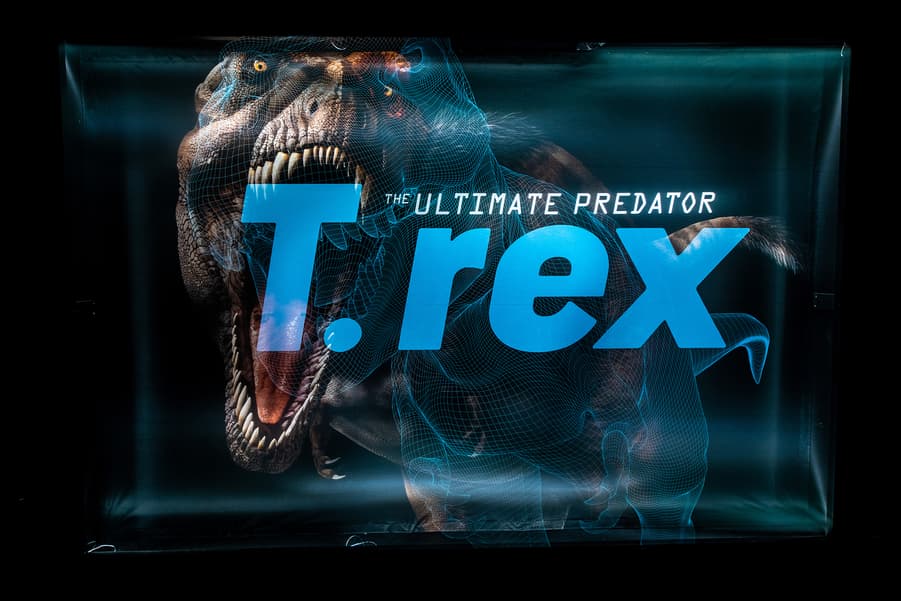An Expert Explains How the Tyrannosaurus Rex Stacks Up to Other Massive Marvel Monsters
Marvel talked to Mark Norell, Curator at the American Museum of Natural History, about one of history's most powerful hunters!
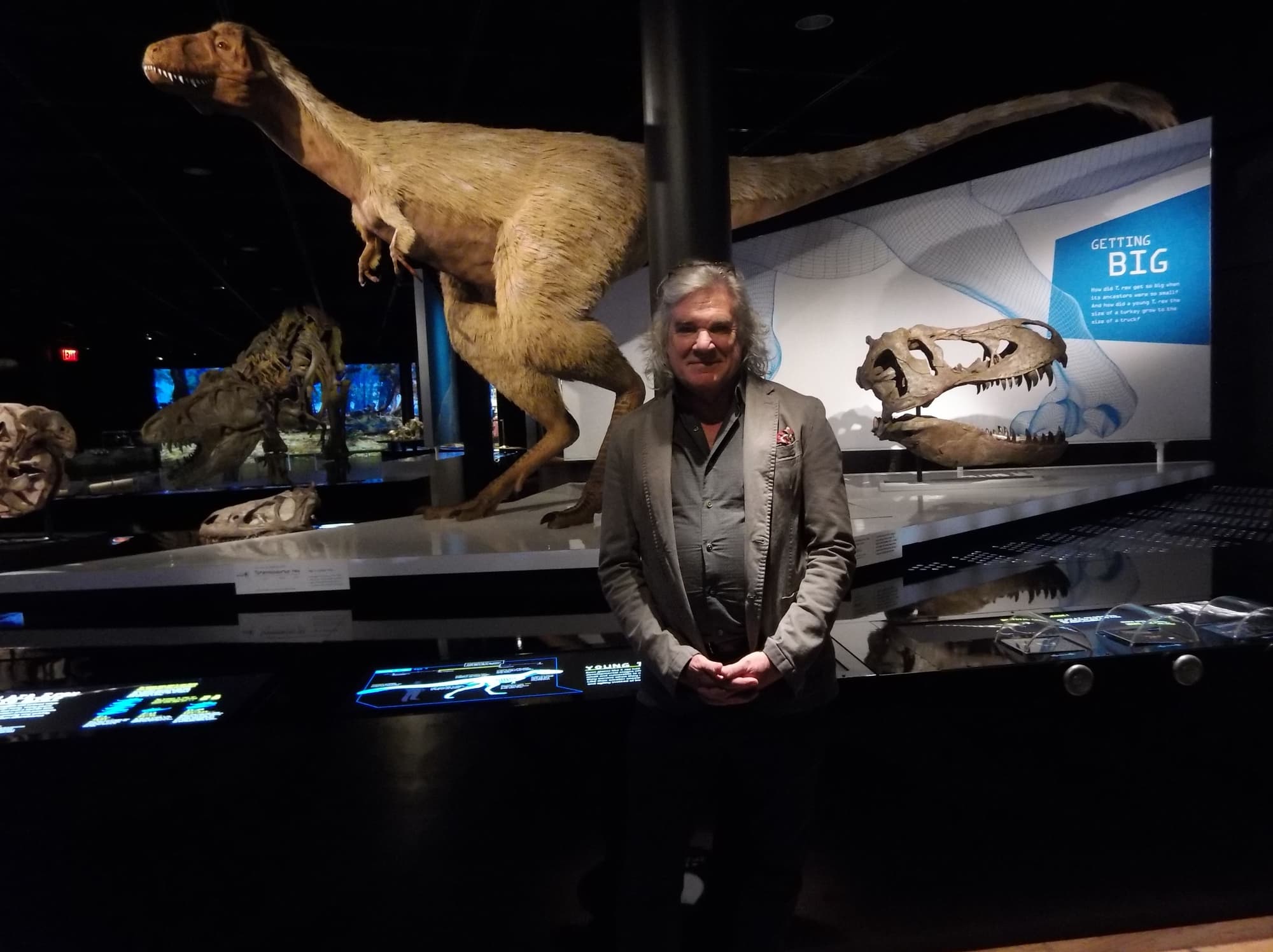
The most powerful creatures in the Marvel Universe have attained their powers through both natural and unnatural means – sometimes fantastical, sometimes scientific. But before the Marvel Universe existed – many millennia before – creatures roamed the Earth that were more powerful than anything alive today. Dinosaurs – massive, mysterious, and marvelous – have fascinated so many since their fossils were discovered and sparked the imaginations of people of every stripe. The Marvel Universe is no stranger to the products of those imaginations, with several dinosaur characters and a whole Savage Land for them to call home!
Marvel.com spoke with a dinosaur expert, Mark Norell, a Curator at the American Museum of Natural History, about the museum’s new exhibit, “T. rex: The Ultimate Predator,” and what made one of the most popular and terrifying dinosaurs on par with the most powerful beings in the Marvel Universe.
Find out just how strong a T. rex bite is, how fast they can run, and why Tony Stark would have loved to know how their vision worked.
The Savage Land in Marvel Comics is a hidden-away land in Antarctica where humans and dinosaurs coexist, where dinosaurs just remained. While this is clearly a fantastical concept, how do you think humans and dinosaurs could coexist?
Well, we kind of do today because, really, birds are a kind of dinosaur. And in fact, the animals you see in this room Tyrannosaurs, are more closely related to living birds than almost any other dinosaur you've ever heard of. Probably the only one you've ever heard of that's closer is the Velociraptor. But everything else, Triceratops, Stegosaurus, Brontosaurus, all those are more distantly related to living birds than Tyrannosaurs are. If you look at a lot of Tyrannosaurs’ features, you’ll see that living birds have these too. For instance, they have three toes that all point forward. They have an S-shaped neck. They carry their backs parallel to the ground, and they have three fingers. And living birds have three fingers that are incorporated into their wings.
But how would we do with the traditional dinosaurs? It depends on which ones. Just like there's a big difference between interacting with a lion or a tiger today and interacting with a sheep.
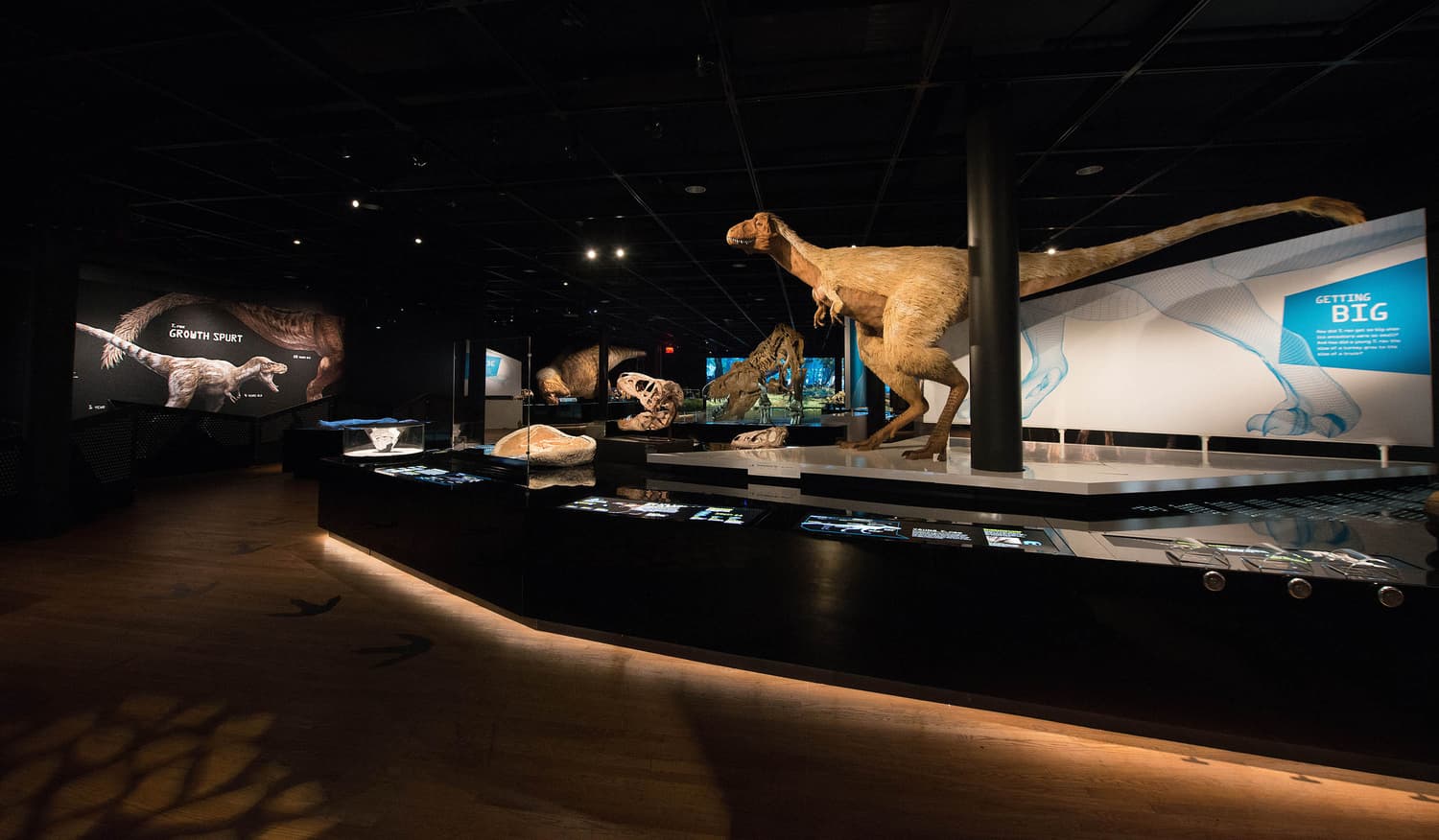
One of the things that I like about dinosaurs in Marvel Comics is that they form bonds with humans. (Maybe so they won't eat us.) Old Lace is a Deinonychus who is engineered to have a psychic link with a human. Is there any evidence that Tyrannosaurs or their relatives had any sort of communication or language?
All animals vocalize to some extent. Even living crocodiles obviously vocalize with one another either to define territories or just to communicate with one another. Living birds also do the same thing. Those are all very close relatives to the extinct dinosaurs. I'm sure they would have had some [communication or language], but I'm sure it was highly variable amongst the different species. As far as you know what they sounded like, that would be really difficult to tell from the fossil evidence.
Devil Dinosaur is a T. rex who was sort of an outcast in Marvel Comics. He was treated differently, he was kidnapped, and then mutated by fire. What is the most frightening mutant power you think a T. rex could have?
Probably the most frightening power that a T. rex had would be its bite force. Their bite force is larger than any animal ever measured. We can't measure it directly, but we can use engineering solutions to estimate the bite force.
The bite force is about 8,000 pounds, and that's equivalent to having about three Mini Coopers dropped on top of you. And if you do an experiment, like taking a metal T. rex tooth and then putting it in a hydraulic vice, and then put a wooden two-by-four in there... You would think that it would puncture it – but it doesn't. It's so much force in the way that the force gets partitioned throughout the two-by-four. It explodes into toothpicks chunks, which is pretty incredible, actually.
Basically, if you get bitten by a T.rex, you're going through a wood chipper.
Yeah. If you look on YouTube at some of the simulations that people have, they have these pieces of wood that they clamp down on and blow up.
So, we could say a really powerful T. rex with mutant biting powers could bite through one of the Marvel Universe's most sturdy elements, vibranium. It's what Captain America’s shield is made of. It's supposed to withstand anything. If the T. rex can bite through vibranium, you're done. They could basically eat a planet. Bite through the moon, maybe.
A very small one.
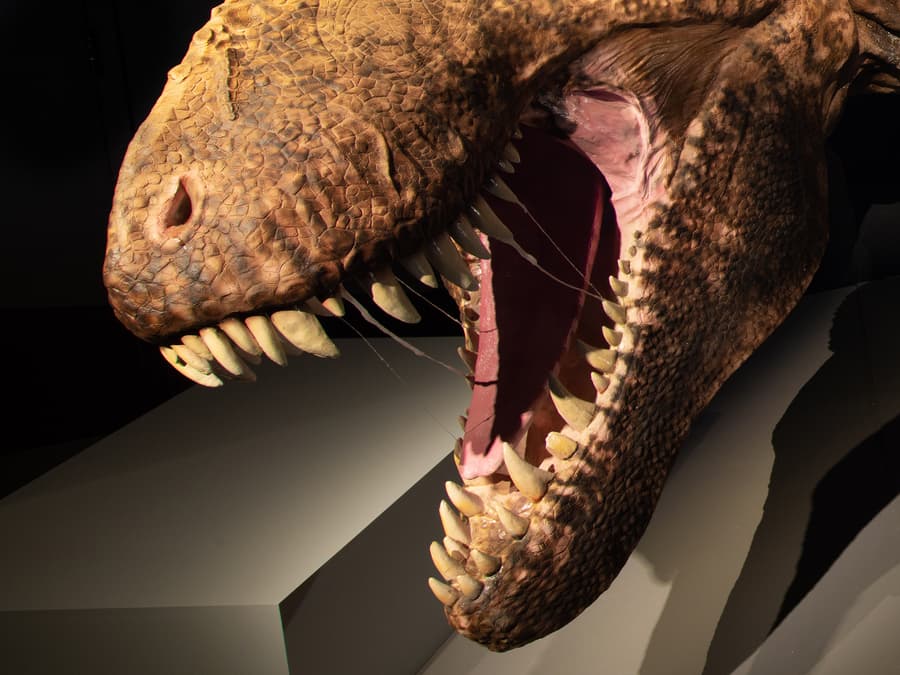
What kind of speed did the T. rex have?
We can calculate how fast it ran – it’s pretty fast. Other scientists have calculated it could go between 18 and 24 miles an hour, which is fast. Faster than we can run – much faster. Certainly it couldn't sustain those kinds of speeds. And we think that it hunted pretty much like a tiger does today. It wasn't a pursuit predator, it was an ambush predator. It would just kind of sit around and then wait for things to get close. Then it would just have explosive bursts of speed to chomp, and probably just one big blow pretty much anywhere in the body because its bite force would totally dispatch animals.
They're kind of like super spies, or a great predator/stalker, but the hiding part might be hard, considering their size.
Not really, because of some of the areas where it lived. You think about the Southern part of the East African savannahs where there are rivers and swampy areas, but there are also these clusters of trees. Usually, some of the animals which are more ambush than pursuit like lions, they live in on the perimeter of those trees, so they're able to hide. And with the right kind of camouflage on its body, it could conceivably be a pretty formidable predator. I mean the largest carnivorous animal that we have today is a Siberian tiger, and that's a big animal (about 13 feet long). You can walk through their habitats, and they can be picked up on motion-activated cameras on trees. I work in those areas and I've never seen one, and nobody I know has ever seen one, but we know that they're there.
And you think the T. rex had that kind of ability?
Maybe not quite that kind of ability, but I think that they would have been effective hunters because they were pretty numerous in their environment at the time.
What do you think is misunderstood about the T. rex?
A lot of things! That it didn't have feathers, because it had feathers. Also these animals, all the dinosaurs have really acute vision, far better than ours. Far better. For several different reasons. One reason is that that they have more “collecting” organs in their eyes. It's basically the same as a computer monitor – more pixels. For example, a 10-year-old monitor looks kind of diffused, and then a retinal display is really crisp. So, you take that to the next level, and that's how a T. rex could see, as far as acuity goes. That's why even living dinosaurs, birds like hawks, can see a little mouse from 500 feet in the air that we could never see.
Hence the moniker “Hawkeye.”
Yeah! We also have light receptors in our eyes that can see three kinds of color. So again, an old computer monitor would be RGB. But dinosaurs and birds and crocodiles are what they call tetrachromats. They have four kinds of light receptors in their eyes, so this room would appear totally different to one of those animals.
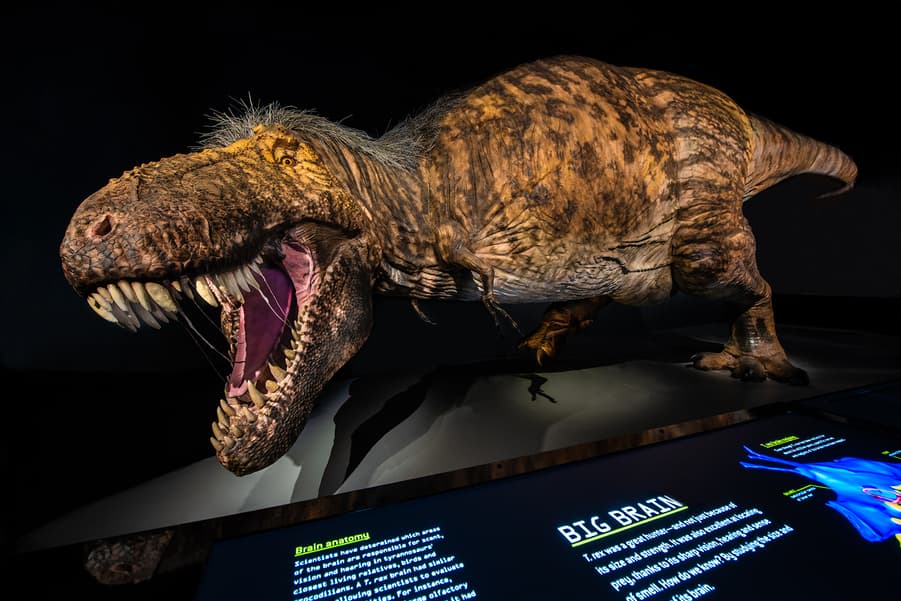
Is that CMYK color?
No, you can't even really explain it. They see different colors and they also can see pretty far into the UV, farther than we can. We actually have goggles [in ”T. rex: The Ultimate Predator”] where you can look at a flower and see how it appears to us, then how would it appear to a living bird or dinosaur or crocodile.
Obviously we don't know exactly how dinosaurs saw, and we don't know for crocodiles either, because it's brand new work that just came out over the holidays this year. But some living birds that we've studied can actually visualize the magnetic field of the Earth in their eyes. They can just look around and see the aurora, 24/7.
Something that I find fascinating and wonderful about animals is the intelligence that we don't understand, their instincts as animals that we humans wouldn't understand by just observing them. What does the T. rex have that we could never pick up?
It all goes back to their sight. Mammals, in our evolutionary history, we went all in for scent. That's why like wildebeest, if a lion is upwind, it can smell it from several kilometers away. That's why airport dogs work because a dog can walk into a McDonald's and even before it hits the door it'll know that there's mustard on the premises or not. Whereas reptiles and birds went all in for sight. They perceive the world totally differently, and it also explains why mammals are pretty dreary and drab in color. There are only four mammals that actually see in color: us, chimps, gorillas, and orangutans. All other mammals see in black and white. All this stuff about a matador shaking a red robe at a bull, it's just black and white television to them. Mammals don't really signal with colors, so they're pretty universally brown or gray or black or white.
Whereas you look at living birds today and they're all these crazy colors, and you look at even lizards and they have their mating coloration and bright blue spots. They’re actually even more colorful than that, we just can't see it because our eyes are [comparatively] pretty crappy. We can look to animals that aren’t even dinosaurs as examples using CT scan data to reconstruct their brains. Both the optic lobes, the light-collecting areas in the brain that the optic nerves go right into, are very large. They're connected to the cerebrum of the forebrain, and that's where visual processing takes place.
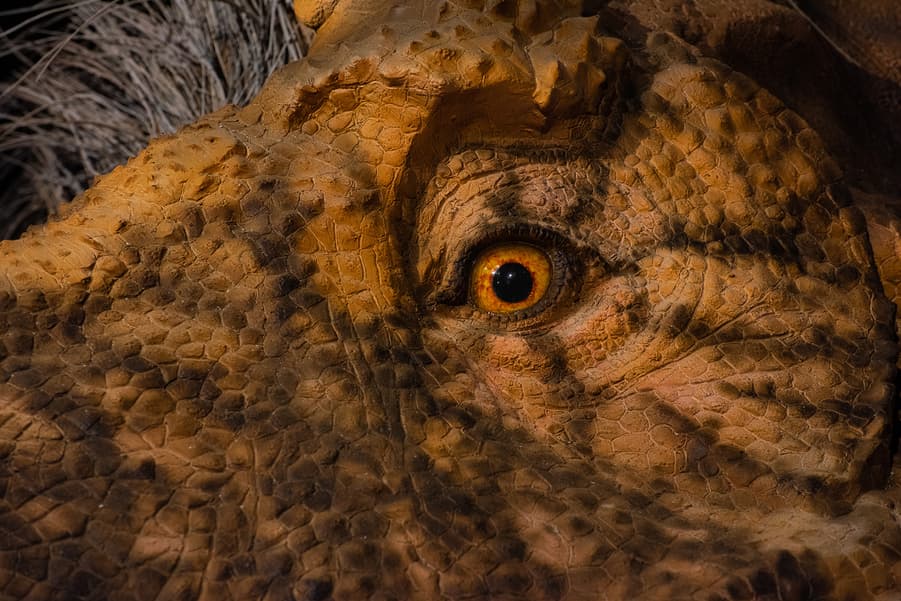
So it's very large in animals as you get closer and closer to living birds, which of course have really large cerebrums. Deinonychus and Velociraptor, they have brains which are virtually identical to the brains of living birds. (They are both probably also intelligent.) Tyrannosaurus doesn't have a quite as developed brain but certainly the optic lobes are very, very large, so it had a very keen and acute sense of vision. Because the eyes are, as in most predators, facing forward, they have an overlapping field of view, so they would have really great depth perception. In herbivorous animals, it's more important to have their eyes on the side of the head so that they have 360-degree vision so they can see stuff that's trying to kill them. If you look at tigers or ourselves or some of these other larger carnivorous animals, they have overlapping fields.
I feel like what I what you've just told me about the T. rex's visual acuity would make for a really good Iron Man technology. Tony Stark would eat this up.
Well, there's a woman I've known for a very long time who just got a job at Princeton University. Cassie Stoddard, she just finished her postgraduate career two years ago, and she actually wrote all this R code [programming]. If you use the right kinds of cameras we can put in this R code and visualize the world the way a bird would, or a dinosaur.
In conclusion, would you consider the T. rex a super-powered creature?
I would consider it an exceptional creature. If you think that you know that [small] animal [at the entrance of the exhibit] could [be fully grown] from what you saw when you came in, in 18 years – that’s about the same time it takes a human female to reach adult size. And to do that, it had an extended period of its life, about 10 years or so, where it was growing at over six pounds a day. Which is pretty incredible.
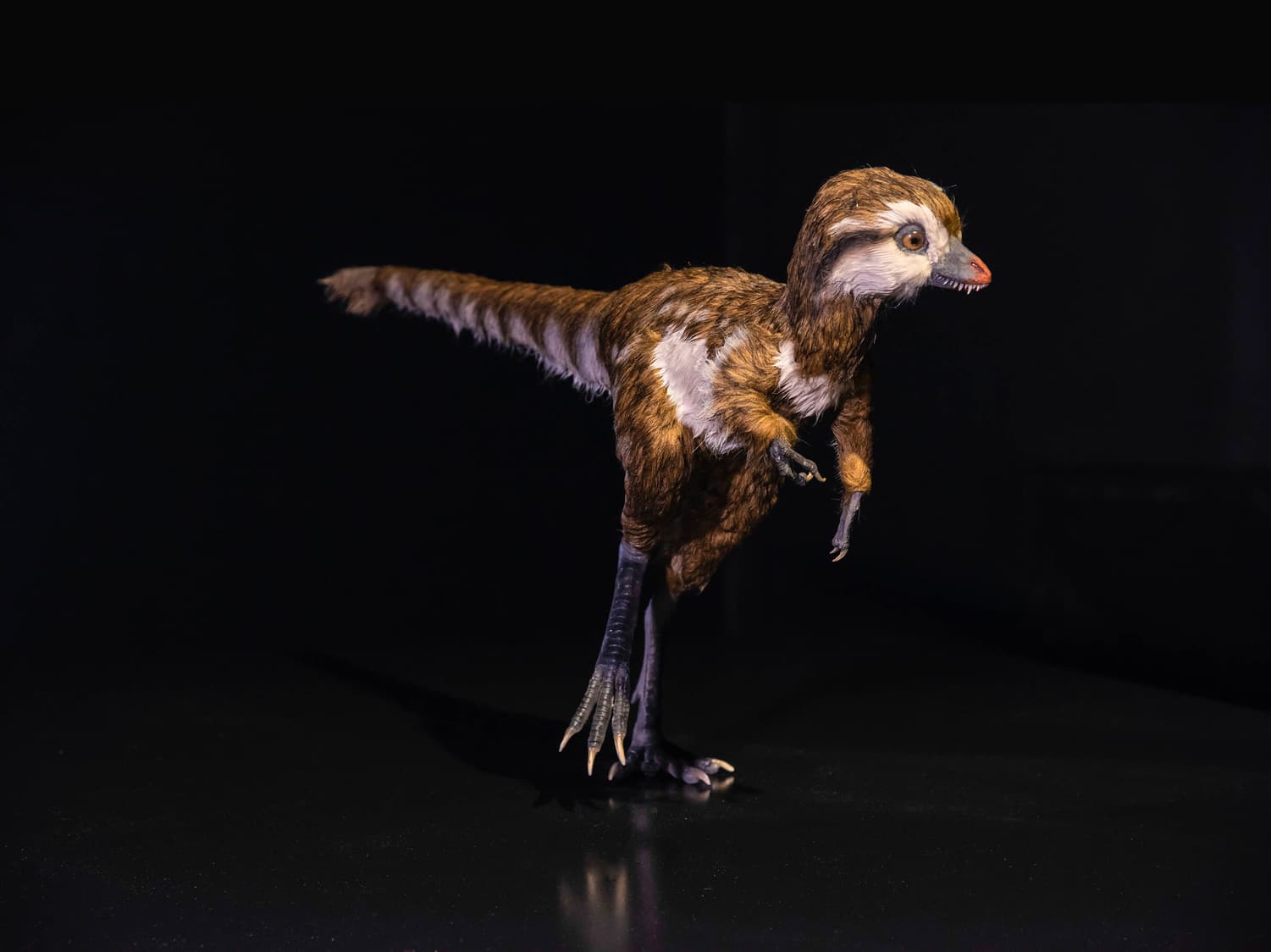
That sounds like it would be painful for the animal.
It'd be more painful for what it's eating.
“T. rex: The Ultimate Predator” is now open at the American Museum of Natural History in New York City!
